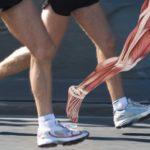DANGERS IN THE GYM
By CEO Robert Forster,PT Every day we see research that shows exercise is the best medicine to prevent and treat many of the lifestyle diseases that plague our population. However, many people are not sure what to do in the gym and they are rightfully concerned about getting injured. Exercise is powerful medicine but proper dosage and use is critical to avoid problems and assure success. We evaluate every exercise with a risk-benefit analysis. If the risk of injury is greater than the benefit, or if the same result can be attained with a different move, the exercise is not prescribed. These are the most common dangers seen in gyms everywhere.
Every day we see research that shows exercise is the best medicine to prevent and treat many of the lifestyle diseases that plague our population. However, many people are not sure what to do in the gym and they are rightfully concerned about getting injured. Exercise is powerful medicine but proper dosage and use is critical to avoid problems and assure success. We evaluate every exercise with a risk-benefit analysis. If the risk of injury is greater than the benefit, or if the same result can be attained with a different move, the exercise is not prescribed. These are the most common dangers seen in gyms everywhere.








